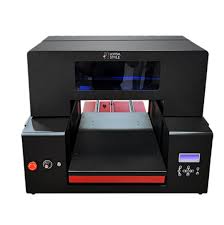
The world of printing technology has seen rapid advancements in recent years, and one of the most exciting developments is the rise of UVDTF printers. Short for Ultraviolet Direct-to-Film, UVDTF printing is revolutionizing how custom prints are transferred onto various surfaces. As this technology evolves, businesses, creators, and hobbyists can look forward to even more efficient, high-quality, and versatile solutions. In this article, we’ll explore what’s new and what to expect in the future of UVDTF printer technology.
What is a UVDTF Printer?
A UVDTF printer uses ultraviolet light to instantly cure the ink printed on a specially coated film. Once cured, this printed film can be transferred onto surfaces like glass, metal, wood, leather, acrylic, and even curved objects, which are typically challenging for traditional printing methods.
Unlike sublimation or heat transfer printing, UVDTF printing doesn’t require high temperatures or pressure. This low-heat, high-precision method results in vibrant, long-lasting images with superior adhesion and scratch resistance. It’s no wonder UVDTF is becoming the go-to solution for premium customized products.
1. Smarter Automation and User-Friendly Interfaces
One major innovation in UVDTF printer technology is the integration of smarter automation. Future printers will increasingly feature AI-assisted alignment, real-time print quality detection, and self-cleaning mechanisms. These enhancements will reduce the learning curve and make the printing process more seamless, especially for small business owners and newcomers to the industry.
Touchscreen controls, wireless connectivity, and cloud-based print management are also being introduced to allow remote access and monitoring. These smart features not only improve efficiency but also reduce downtime and errors.
2. Improved Print Heads and Ink Formulas
The next generation of UVDTF printers will come equipped with advanced print heads that offer better precision and faster output. With resolutions exceeding 1440 DPI and multi-pass printing capabilities, users can expect sharper images and smoother gradients on complex surfaces.
Additionally, innovations in UV-curable ink formulas are enhancing flexibility and environmental safety. Manufacturers are focusing on eco-friendly inks that are VOC-free and safe for indoor use. These new formulas also boost durability, offering resistance to UV exposure, moisture, and everyday wear and tear.
3. Expanded Material Compatibility
One of the biggest selling points of UVDTF printing is its ability to work on a variety of surfaces. Upcoming UVDTF printer models are expected to handle an even broader range of materials. From silicone and rubber to unconventional composites, new adhesion technologies and specialized primer layers will enable transfers on virtually any surface.
This expansion opens doors for niche markets—think custom phone cases, personalized electronics, promotional items, and high-end décor. The level of customization available will continue to grow as the technology adapts to different use cases.
4. Compact, Desktop-Friendly Models
As demand grows among small businesses, hobbyists, and e-commerce entrepreneurs, manufacturers are focusing on designing compact UVDTF printers that fit in home or studio environments. These user-friendly models will come with plug-and-play features, low maintenance needs, and budget-friendly pricing—making them an attractive alternative to larger industrial machines.
Despite their smaller size, these printers will not compromise on quality. Expect features like dual-layer printing, integrated film dryers, and easy film feed mechanisms to be standard in newer desktop models.
5. Eco-Conscious Design and Sustainability
Sustainability is at the forefront of innovation in all industries, and UVDTF technology is no exception. The next wave of UVDTF printers will be designed with energy efficiency and waste reduction in mind. Automated ink regulation systems, recyclable film materials, and LED UV curing (which consumes less energy) are expected to become industry standards.
Companies are also investing in biodegradable transfer films and water-based coatings, making the entire UVDTF printing process greener and more appealing to environmentally conscious consumers.
6. Increased Adoption Across Industries
As UVDTF printing becomes more accessible, industries such as retail, fashion, electronics, and interior design are adopting it for a variety of applications. From limited edition merchandise to branded promotional products and personalized corporate gifts, the versatility of UVDTF printers is driving new revenue opportunities.
Innovative software integration will allow users to customize their designs using augmented reality (AR) previews, online design tools, and e-commerce plugins, simplifying the user experience from design to print.
Conclusion
The future of UVDTF printer technology is bright, with continuous innovation reshaping the landscape of modern printing. Whether you’re a business looking to expand your product line or a designer aiming to create high-impact visuals, staying informed about these advancements can give you a competitive edge.
As more brands enter the UVDTF space, expect better performance, more eco-friendly features, and broader creative possibilities. One thing is certain—UVDTF printing is not just a trend; it’s a transformative leap forward in custom printing technology.